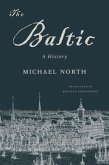This essential survey traces the history of three Baltic peoples - Estonians, Latvians and Lithuanians - from their origins as tribal societies to their transformation into dominant national populations in separate states. Focusing especially on recent centuries, the book integrates the histories of the recently formed nations to highlight their common features.
Hinweis: Dieser Artikel kann nur an eine deutsche Lieferadresse ausgeliefert werden.
Hinweis: Dieser Artikel kann nur an eine deutsche Lieferadresse ausgeliefert werden.
'A masterful survey of the history of the eastern Baltic littoral by one of the leading authorities in the field. Plakans' book provides the most accessible account to date of the rise of modern nationhood and of the commonalities of fate that have bound the peoples of the region during the modern era. Essential reading for anyone interested in understanding contemporary Estonia, Latvia and Lithuania.' David J. Smith, University of Glasgow








